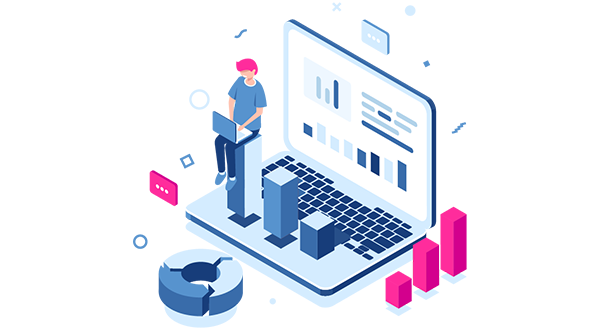

U.S. State Agency: Digital Transformation via Seamless System Modernization from IBM IMS to Db2

Industry: Government
Headquarters: U.S.
Coverage: Statewide
Our Customer
The organization is a government agency committed to improving the lives of its state’s nearly eight million residents. With a mission to address a full array of socio-economic issues, the organization provides state and federally funded services for financial aid, health care, food assistance, child welfare and support for individuals with developmental disabilities.
The Challenge
The agency had embarked on a comprehensive mainframe modernization and digital transformation journey aimed at improving service delivery by modernizing and consolidating its programs and systems. The goals of this project included improving cost efficiencies and accelerating business processes while continuing to evolve and innovate its service delivery statewide.
The Customer wanted to modernize their entire technology stack and needed a cost-effective, scalable and flexible deployment model to run and maintain all applications, databases and supporting components while providing uninterrupted services to its millions of users.
Key challenges included:
Data Model Complexities
The hierarchical schema of the existing IMS database made it difficult to represent changing relationships between various data elements. Modifying this complex data model and structure to meet the agency’s evolving business needs had become prohibitively resource-intensive.
Query Language and Performance
The DL/I (data language/I) used for queries was challenging for developers to execute since it was highly complex, particularly when compared to the target SQL. In addition, query optimization in the IMS database presented additional complexities that adversely impacted system performance.
Vertical Scalability Limitations
Vertical scalability in the IMS database was limited and handling large numbers of concurrent transactions created chronic performance issues. This limitation was in contrast to modern databases that are horizontally scalable.
Inability to Integrate New Technology
Since modern ecosystems, APIs (application programming interfaces) and toolkits are designed for SQL-based relational databases, it was virtually impossible to integrate up-to-date applications, services and analytics tools into the Customer’s legacy IMS database environment.
Scarcity of Qualified Support Resources
The agency struggled with a widespread shortage of resources who possess the skill sets to support their legacy technology, making it difficult for the organization to manage its existing applications and data and ensure future business continuity.
The Solution
The migration plan for this project was to replace DL/I (IMS DB calls) and IMS data with Db2, a relational database management system (RDBMS), while making minimal changes to the existing applications. The mLogica team integrated bridge programs that convert IMS queries into SQL queries instead of DL/I calls so they can be processed seamlessly by the Customer’s new Db2 database.
These bridge applications replicated the interface as if it were still communicating with the IMS database, uninterruptedly returning the required I/O area to the calling application. By simplifying the migration process and reducing application modifications, the migration team aimed to shorten execution times while minimizing impact to users’ work processes.
mLogica developed and executed an all-inclusive phased migration strategy for this mainframe modernization, including:
Assessment
Using LIBER*DAHLIA, the assessment module of our automated LIBER*M Mainframe Modernization Suite, the mLogica team performed a highly detailed analysis of the Customer’s entire legacy application environment. This allowed us to identify components that required modification to minimize dependencies on the existing IMS database, allowing for optimal migration to Db2.
Execution
Throughout the execution phase, mLogica used the LIBER*IRIS module of our automated LIBER*M Mainframe Modernization Suite. LIBER*IRIS supports automated data and database migration from ISAM, VSAM, Db2 z/OS, IMS DB and IDMS to relational databases such as Db2 LUW, Oracle, MSSQL Server and more.
Target DDL (data definition language) was created using LIBER*IRIS automated migration tooling, specifying relational data structures for Db2 similar to legacy IMS database hierarchical structures. Programs for data transformation were created to convert and load data from the existing IMS database to the destination Db2 database.
Based on the IMS database and Db2 data structures, LIBER*IRIS generated bridge programs and adapted the application code to substitute DL/I calls with calls to bridge programs. IMS DB utilities in JCLs were automatically replaced with functionally equivalent utilities compatible with the target Db2 database, providing a seamless, automated migration process.
Comprehensive Testing
Following the migration, the mLogica’s team worked with the Customer to develop extensive functional test cases for the target system and conduct performance benchmarking of the migrated mainframe programs. The test cases that were performed on the migrated mainframe programs validated performance and functionality equivalence that complied with the agreed-upon service level agreements (SLAs).
Cutover, Go-Live and Post-Go-Live Support
mLogica provided full technical support for the cutover process, which ensured end-to-end migration of the dataset from the source database to the production environment within the required timeline. In addition, mLogica provided post-go-live support and implemented a comprehensive issue resolution process to track and resolve any issues experienced by users in the production environment. Defects were triaged, tracked and remediated according to criticality.
The Benefits
This digital transformation project, comprising migration of the entire technology stack of a vital U.S. state government agency from IMS to Db2, has produced key business benefits. The hurdles faced by the Customer, including data model complexities, query language and performance issues, and challenges of integration and scalability were all rooted in their IMS database's incompatibility with modern technologies. In addition, a shortage of qualified mainframe support resources was an escalating issue that threatened future business continuity. The decision to migrate to a new Db2 environment has mitigated these issues cost-effectively, with a minimum of business disruption.
mLogica’s expert team pursued a proven modernization approach, substituting DL/I (IMS DB calls) with calls to bridge programs and migrating IMS DB data into the Db2 RDBMS environment, ensuring minimum impact on existing applications. This approach was instrumental in the successful execution of this migration without making substantial changes to applications or user experience.
Unmatched Experience and Technology
mLogica’s automated migration tools LIBER*DAHLIA and LIBER*IRIS, modules of our LIBER*M Mainframe Modernization Suite, underpinned this entire mainframe modernization process, including assessment of existing IMS programs, generation of target DDL, migration of IMS components and creation of bridge programs.
The mLogica team conducted comprehensive test cases to benchmark and validate the performance of migrated programs, ensuring error-free execution and optimal performance, with minimal disruption to end users’ work processes. We also provided 24/7 cutover, go-live and post-go-live technical support, including full remediation of any reported defects.
Conclusion
This Customer’s mainframe modernization has been a true digital transformation. They now enjoy accelerated service delivery, faster business processes and significant cost efficiencies, allowing this vital social and health services agency to innovate and optimize overall user experience, both for internal teams and millions of residents statewide.








































